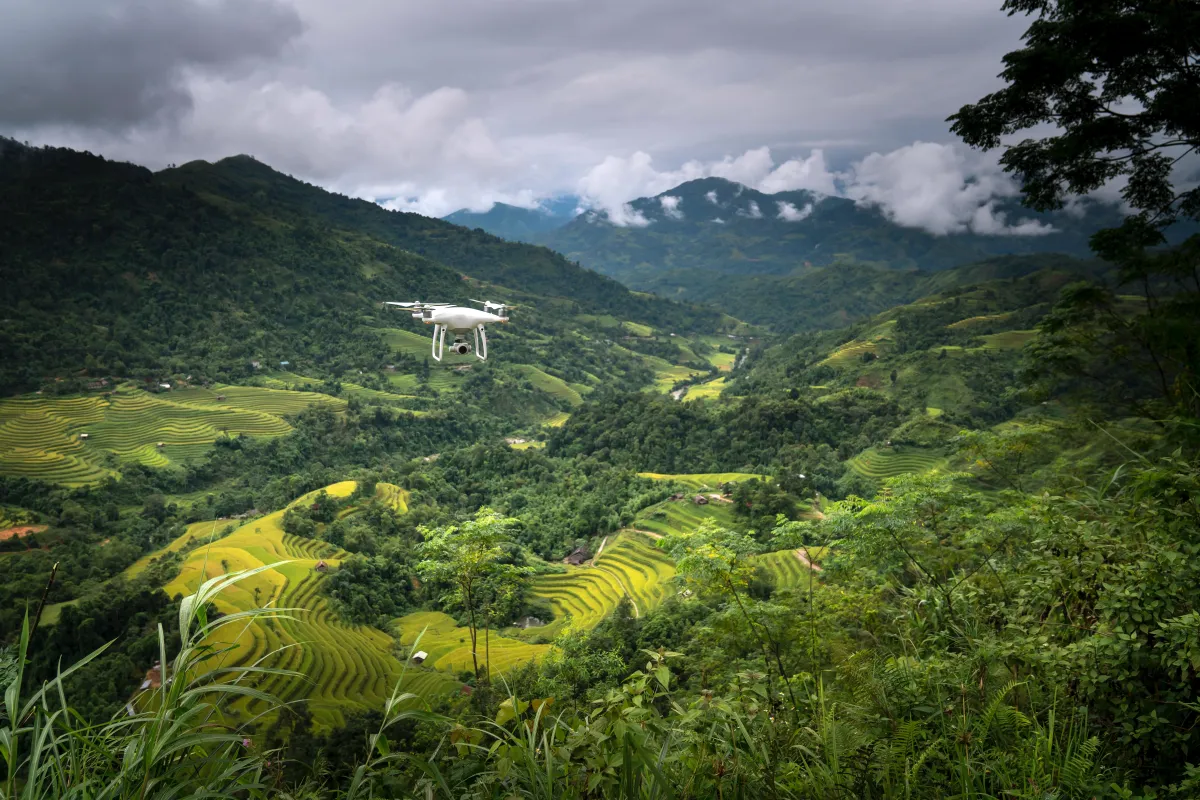
Drones by Range - Finding the Perfect Fit
Drones have revolutionized various industries and hobbies, from photography and videography to agriculture and search-and-rescue missions. One critical aspect to consider when delving into the world of drones is their range. Choosing the right drone range is paramount to ensure your goals are met efficiently and effectively. In this article, I'll guide you through the different ranges of drones, helping you make an informed decision based on your specific needs.
Understanding Drone Range
Before we dive into the various types of drones by range, let's establish what drone range actually means. In simple terms, it refers to how far a drone can fly from its operator while maintaining a stable connection and control. Several factors influence a drone's range, with battery life and signal strength being the most prominent.
Types of Drones by Range
Drones can be categorized into three main groups based on their range: short-range, mid-range, and long-range. Each of these categories serves different purposes and comes with its own set of advantages and limitations.
Short-Range Drones
Short-range drones are typically designed for close-quarter operations. They have a limited range, usually up to a few hundred meters. These drones are perfect for beginners and those interested in recreational flying. They are often compact and lightweight, making them highly portable. They are easy to maneuver and provide an excellent platform for learning the basics of drone piloting. However, their limited range restricts their usability in professional applications.
Ideal Use Cases:
Recreational Flying: Short-range drones are perfect for beginners and recreational flyers. They provide an excellent platform for learning the basics of drone piloting without the complexity of longer-range drones.
Indoor Use: Due to their limited range, short-range drones are suitable for indoor flights, making them a favorite for aerial photography and fun indoor activities.
Limitations:
Limited Coverage: Short-range drones are not suitable for applications that require extensive coverage. They are best for small-scale tasks.
Restricted Professional Use: Their limited range restricts their use in professional applications such as agriculture, mapping, and long-distance surveillance.
Mid-Range Drones
Mid-range drones offer a significant step up in terms of range compared to short-range drones and offer a more versatile solution. They can typically fly up to a few kilometers from the operator while maintaining a stable connection and are suitable for a wide range of tasks. These drones strike a balance between portability and functionality.
Ideal Use Cases:
Photography and Videography: Mid-range drones are a popular choice among photographers and videographers. They offer the range needed to capture stunning aerial shots without the expense of long-range drones.
Hobbyist Exploration: Hobbyists who want to explore their surroundings from an aerial perspective often prefer mid-range drones for their versatility.
Limitations:
Limited for Professional Mapping: While mid-range drones offer better coverage than short-range ones, they may still fall short for large-scale mapping and surveying tasks.
Not Suitable for Long-Range Missions: Professionals requiring long-range capabilities, such as search and rescue teams or extensive agricultural operations, should consider long-range drones.
Long-Range Drones
Long-range drones are heavyweights in the drone world when it comes to range capabilities. These drones are designed to cover substantial distances, often several kilometers or even beyond the visual line of sight of the operator. They are typically larger and more robust than short and mid-range drones. Their ability to cover vast areas efficiently makes them indispensable for professionals.
Ideal Use Cases:
Agriculture: Long-range drones are invaluable in agriculture for monitoring large fields, optimizing crop health, and applying precision farming techniques.
Search and Rescue: Search and rescue teams benefit from long-range drones, as they can cover extensive areas quickly and efficiently, providing vital situational awareness.
Surveillance and Security: Long-range drones are used for border security, infrastructure surveillance, and event monitoring, thanks to their ability to cover vast areas.
Limitations:
Costly Investment: Long-range drones are often a substantial financial investment due to their advanced capabilities, making them less suitable for casual hobbyists.
Complex Operation: Operating long-range drones requires a higher level of skill and knowledge to ensure safe and effective missions.
Discover the significant contributions of long-range drones to our daily lives through research and publications available on copernicus.org and ieeexplore.ieee.org.
How to Choose the Right Drone Range
Selecting the right drone range is a decision that shouldn't be taken lightly. For a well-informed decision, take into account these factors:
Purpose: Define your drone's primary mission. Are you a recreational flyer, a content creator, or a professional in need of long-range capabilities?
Finances: Your budget holds substantial sway in your selection. Short-range drones are budget-friendly, while long-range drones can be a substantial investment.
Skill Level: Beginners might find short-range drones more forgiving, while experienced pilots can handle the complexities of long-range drones.
Regulations: Be aware of local regulations and restrictions that might affect where and how you can fly your drone.
Tips for Maximizing Drone Range
Regardless of the drone range you choose, there are ways to maximize your drone's flight capabilities:
Battery Management:
Battery life is a critical factor in your drone's range. Proper battery management is key to extending your flight time:
Multiple Batteries: Invest in extra batteries for your drone. Having spare batteries on hand allows you to swap them out and continue flying, effectively extending your drone's total flight time.
Battery Maintenance: Adhere to the manufacturer's recommendations for battery upkeep. Ensure your batteries are charged and stored correctly to maintain their health and longevity.
Monitor Battery Levels: Keep a close eye on your drone's battery levels during flight. Most drones provide real-time information about the remaining battery capacity. Plan your flight to return home with a comfortable buffer of battery power remaining.
Use Battery-Saving Modes: Many drones offer different flight modes, including battery-saving modes. These modes optimize the drone's performance to conserve battery life. Consider using them when appropriate.
Signal Boosters:
Signal strength is another crucial factor in your drone's range. Here's how you can boost your drone's signal for extended range:
Signal Extenders: Invest in signal extenders or range boosters specifically designed for your drone model. These accessories can significantly enhance the range by improving the communication between your remote controller and the drone.
Antenna Orientation: Pay attention to the orientation of your remote controller's antennas. Ensure they are pointed in the direction of your drone. Avoid blocking the antennas with your body or other objects during flight.
Line of Sight: Maintain a clear line of sight between your drone and the remote controller. Obstacles such as trees, buildings, and terrain can weaken the signal. Ascend to a higher altitude if possible to maintain a direct line of sight.
Avoid Interference: Fly in areas with minimal Wi-Fi and radio interference. Urban environments with many electronic devices can disrupt the drone's signal. Choose open spaces for better signal stability.
Signal Booster Apps: Some drone apps offer signal booster features that can enhance signal strength. Check if your drone's app provides this capability and use it when needed.
Flight Planning:
Flight planning is a critical aspect of getting the most out of your drone's range. It involves careful consideration of various factors to ensure a safe and efficient flight. Here's how effective flight planning can help you optimize your drone's range:
1. Define Your Mission Goals
Before takeoff, clearly define the objectives of your drone mission. Ask yourself questions like:
What specific shots or data do you need to capture?
How long will your flight need to be to accomplish your goals?
Are there any specific waypoints or areas you need to cover?
Having a clear mission goal will guide your flight plan and help you make the most of your drone's range without unnecessary detours.
2. Check Weather Conditions
Weather conditions significantly impact your drone's performance and range. Wind, rain, and extreme temperatures can affect battery life and the stability of your flight. Use weather forecasting tools and apps to check conditions at your flight location.
Wind Speed: Avoid flying in strong winds, especially if your drone has limited range. High winds can quickly drain the battery as the drone struggles to maintain its position.
Precipitation: Rain or snow can damage your drone's sensitive electronics. Steer clear of flying in challenging weather conditions to safeguard your equipment's integrity.
3. Plan Efficient Flight Paths
Efficient flight paths are essential for maximizing range. Avoid unnecessary maneuvers and maintain a direct route to your intended locations. Here's how to plan an efficient flight path:
Waypoints: Set waypoints on your drone's flight app or controller to create a predefined flight path. This minimizes manual control and ensures your drone follows an optimal route.
Altitude Control: Consider flying at an optimal altitude. Higher altitudes can reduce wind resistance and improve battery life, but make sure to comply with local regulations.
Circular Patterns: For tasks like aerial photography or surveying, plan circular flight patterns around your target. This allows you to capture comprehensive data without excessive back-and-forth flying.
4. Monitor Battery Life
Constantly monitor your drone's battery life during flight. Most drones provide real-time battery information on your controller or app. Keep in mind that the return journey consumes battery too. Plan to return to your starting point with enough battery power for a safe landing.
Return-to-Home (RTH) Feature: Familiarize yourself with your drone's RTH feature. It automatically brings your drone back to its takeoff point when the battery reaches a critical level.
5. Account for Signal Range
While optimizing for battery life, also consider the signal range between your drone and remote controller. Maintain a line of sight and stay within the effective range to ensure you have full control.
Signal Extenders: If necessary, use signal extenders or range boosters to increase the range of communication between your drone and controller.
6. Emergency Contingencies
Prepare for unexpected situations. Have a plan in case of signal loss or other emergencies. Know how to manually fly your drone back to your location if needed.
Safety Considerations for Drones by Range
Safety should always be a top priority when operating drones. Familiarize yourself with local regulations and guidelines for drones in your area. Additionally, invest in safety features like obstacle avoidance systems and return-to-home functions, which are prevalent in mid-range and long-range drones.
Advancements in Drone Range Technology
The world of drones is constantly evolving, and technology is driving significant advancements in drone range. Look out for innovations such as improved battery life, more robust communication systems, and autonomous flight capabilities. These developments are making drones more capable and accessible than ever before.
Conclusion
In the world of drones, finding the perfect fit in terms of range is essential. Whether you're a hobbyist capturing breathtaking landscapes or a professional conducting critical missions, the right drone range can make all the difference. Consider your needs, budget, and skill level when making your choice, and always prioritize safety. With the continuous advancements in drone technology, the sky is no longer the limit; it's just the beginning.
FAQs About Drones by Range
How do I determine the range I need for my drone?
Consider your intended use, budget, and skill level. Short-range for beginners, mid-range for versatility, and long-range for professionals.
Are there any legal restrictions on drone range?
Yes, many countries have regulations on drone range, especially for long-range operations. Familiarize yourself with local laws.
Can I increase my drone's range with accessories?
Yes, signal boosters can extend your drone's range, but always follow safety guidelines and regulations.
What safety features should I look for in a drone by range?
Obstacle avoidance systems, return-to-home functions, and GPS capabilities are crucial safety features.
Are there upcoming technologies that will further increase drone range?
Yes, advancements in battery technology and communication systems will likely continue to improve drone range in the future.

Copyright © Drone Guide Central - All Rights Reserved 2024

